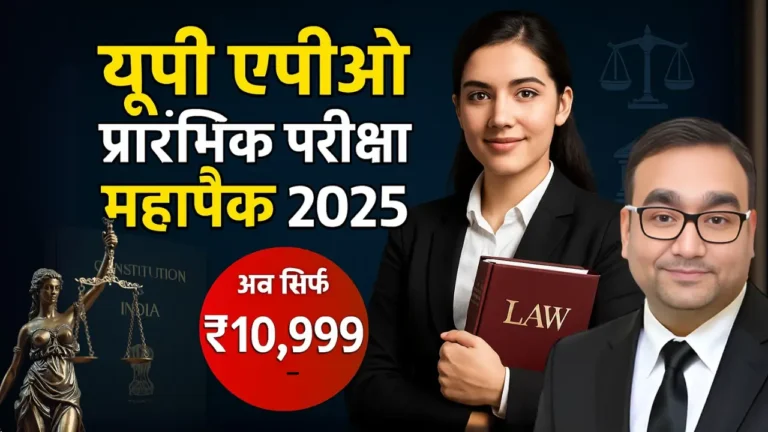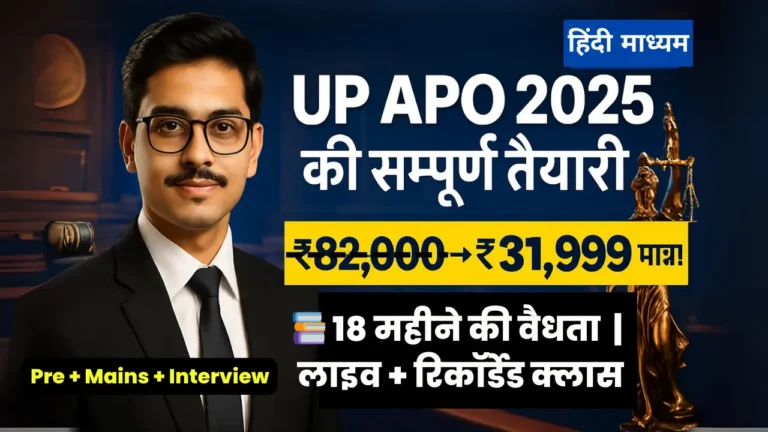The Supreme Court in Amar Jain v. Union of India (2025) recognized the right to digital access as part of Article 21, mandating accessible eKYC processes for persons with disabilities. Learn about the judgment, its constitutional significance, and its impact on digital inclusion.
Table of Contents
Introduction
In a groundbreaking decision on April 30, 2025, the Supreme Court of India in Amar Jain v. Union of India and Ors. (2025 SC) declared that the right to digital access is an essential component of the right to life and personal liberty under Article 21 of the Constitution. Delivered by a bench of Justice J.B. Pardiwala and Justice R. Mahadevan, the judgment addressed barriers faced by persons with disabilities, particularly acid attack survivors and those with visual impairments, in accessing the digital Know Your Customer (eKYC) process. The Court issued 20 directions to ensure eKYC accessibility, emphasizing the State’s duty to create an inclusive digital ecosystem under the Rights of Persons with Disabilities Act, 2016 (RPwD Act). This ruling marks a significant step toward bridging the digital divide, benefiting not only persons with disabilities but also marginalized communities like rural populations and linguistic minorities. This educational blog explores the case, its legal foundation, key findings, and broader implications for digital inclusion in India.
Background of the Case
The Amar Jain v. Union of India case, heard alongside Pragya Prasun v. Union of India, arose from two writ petitions highlighting the inaccessibility of eKYC processes for persons with disabilities. These processes, critical for accessing banking, telecom, and government services, often require actions like taking selfies, blinking, head tilting, signing digitally or on paper, and responding to short-duration OTPs—tasks that pose significant challenges for individuals with facial disfigurement or visual impairments.
Petition Details
- Pragya Prasun v. Union of India: Filed by acid attack survivors with permanent facial disfigurement and eye damage, this petition sought alternative eKYC methods to ensure access to essential services. The petitioners argued that requirements like positioning faces within digital frames or performing facial movements were discriminatory and violated their rights under the RPwD Act, 2016, and the Constitution.
- Amar Jain v. Union of India: Filed by Advocate Amar Jain, who is 100% blind, this petition raised concerns about inaccessible eKYC tasks such as handling OTPs, taking selfies, and signing digitally. It contended that these barriers denied visually impaired individuals equal access to services, contravening the RPwD Act and constitutional guarantees.
The Supreme Court issued notice on January 21, 2025, tagged the petitions, and delivered its verdict on April 30, 2025, after reserving judgment on January 28, 2025.
Read More: Role of Article 356 and President’s Rule: Is It Being Misused in India?
Legal Foundation: Digital Access as a Fundamental Right
The judgment, authored by Justice R. Mahadevan, redefined Article 21 to include the right to digital access, recognizing its importance in an era where essential services—banking, education, healthcare, and governance—are increasingly online. The Court anchored this right in several constitutional provisions and the RPwD Act, 2016, emphasizing the State’s obligation to ensure equitable digital inclusion.
Constitutional Provisions
- Article 21: Guarantees the right to life and personal liberty, interpreted to include a life of dignity and equal participation. The Court held that access to digital platforms is vital for realizing these rights in a digital age.
- Article 14: Ensures equality before the law, prohibiting discriminatory barriers in digital access.
- Article 15: Prohibits discrimination on grounds including disability, mandating reasonable accommodations for persons with disabilities.
- Article 38: Directs the State to promote social justice, which includes addressing the digital divide affecting marginalized groups.
Rights of Persons with Disabilities Act, 2016
The RPwD Act, 2016, recognizes acid attack survivors and persons with visual impairments as persons with disabilities. Key provisions include:
- Section 3: Mandates equality and non-discrimination, requiring reasonable accommodations to ensure access.
- Section 42: Obligates the government to make information and communication technologies accessible to persons with disabilities.
The Court found that inaccessible eKYC processes violated these provisions, denying petitioners their statutory rights.
Read More: Top 5 Ways to Improve Your Voice for Judiciary Interview 2025
Justice Mahadevan’s Key Observations
Justice Mahadevan’s judgment underscored the constitutional imperative of digital inclusion:
“In the contemporary era, where access to essential services, governance, education, health care, and economic opportunities are increasingly mediated through digital platforms, the right to life under Article 21 of the Constitution must be re-interpreted in light of these technological realities. The digital divide… perpetuates systematic exclusion not only of persons with disabilities but also of large sections of rural populations, senior citizens, economically weaker communities, and linguistic minorities. Bridging the digital divide is no longer a matter of policy discretion but has become a constitutional imperative to secure a life of dignity, autonomy, and equal participation in public life.”
This reasoning positions digital access as a fundamental right, essential for substantive equality.
Key Findings of the Judgment
The Supreme Court’s verdict in Amar Jain v. Union of India addressed systemic barriers in digital access, issuing 20 directions to make eKYC processes inclusive. The key findings include:
- Digital Access as Part of Article 21: The right to access digital infrastructure—government portals, learning platforms, and financial technologies—is intrinsic to a dignified life under Article 21.
- State’s Constitutional Duty: The State must ensure universal accessibility for vulnerable groups, including persons with disabilities, rural communities, senior citizens, and linguistic minorities, under Articles 14, 15, 21, and 38.
- Discriminatory eKYC Norms: Current eKYC requirements, such as blinking, head tilting, or selfie-taking, discriminate against acid attack survivors and visually impaired persons, violating the RPwD Act, 2016.
- Need for Reasonable Accommodation: The RPwD Act mandates alternative authentication methods to ensure equitable access to digital services.
Twenty Directions for eKYC Accessibility
While the full text of the 20 directions awaits the judgment’s upload, the Court outlined measures to enhance eKYC accessibility, including:
- Alternative Authentication Methods: Voice-based authentication, biometric alternatives, or manual verification for those unable to perform facial movements or take selfies.
- Accessible Digital Interfaces: Websites and apps must comply with Web Content Accessibility Guidelines (WCAG), ensuring compatibility with screen readers and assistive technologies.
- Extended OTP Durations: Longer validity periods for OTPs to accommodate visual impairments.
- Staff Training: Bank and government personnel must be trained to assist persons with disabilities in completing eKYC processes.
- Regional Language Support: Digital platforms must provide content in local languages to include linguistic minorities.
These directions aim to create an inclusive digital ecosystem, ensuring access to banking, telecom, and government services for all.
Read More: Role of Article 21 in the Pegasus Spyware Case: Balancing Privacy and National Security
Broader Implications of the Judgment
The Amar Jain v. Union of India ruling has transformative implications for Indian society and legal practice:
- Digital Inclusion for All: Beyond persons with disabilities, the judgment benefits rural populations, senior citizens, economically weaker sections, and linguistic minorities by mandating accessible digital infrastructure.
- Policy Overhaul: Government and private entities must adopt WCAG standards, redesign portals, and train staff to comply with the Court’s directions.
- Strengthening Disability Rights: The ruling reinforces the RPwD Act, 2016, ensuring reasonable accommodations in digital services, aligning with global standards like the UN Convention on the Rights of Persons with Disabilities.
- Judicial Role in Modern Challenges: By expanding Article 21 to include digital access, the Court builds on precedents like K.S. Puttaswamy v. Union of India (2017) (right to privacy) and Vikash Kumar v. UPSC (2021) (reasonable accommodation), showcasing judicial activism in addressing technological inequities.
Challenges in Implementation
Despite its progressive vision, implementing the judgment faces challenges:
- Technological Barriers: Many government portals and lower courts lack WCAG-compliant interfaces, as seen in cases like Madan Mili v. Union of India.
- Digital Literacy Gaps: Rural and marginalized communities require training to navigate accessible platforms effectively.
- Resource Constraints: Upgrading digital infrastructure and training staff across states demands significant funding and coordination.
- Monitoring Compliance: Ensuring consistent adherence to the 20 directions requires robust oversight mechanisms.
Addressing these challenges will be critical to realizing the judgment’s goals.
Contextualizing with Judicial Precedents
The Amar Jain v. Union of India ruling builds on prior Supreme Court decisions expanding disability rights and digital access:
- Rajive Raturi v. Union of India (2017): Recognized accessibility of public infrastructure as part of Article 21, setting the stage for digital inclusion.
- Vikash Kumar v. UPSC (2021): Mandated reasonable accommodations for persons with disabilities in competitive exams, reinforcing the RPwD Act.
- Jeeja Ghosh v. Union of India (2016): Upheld dignity and non-discrimination for persons with disabilities, aligning with Article 21.
These precedents underscore the Court’s consistent efforts to uphold substantive equality for marginalized groups.
Conclusion
The Supreme Court’s decision in Amar Jain v. Union of India (2025) is a landmark in Indian constitutional law, recognizing the right to digital access as an integral part of Article 21. By mandating accessible eKYC processes and issuing 20 directions, the Court has paved the way for an inclusive digital ecosystem that serves persons with disabilities, rural communities, and other marginalized groups. This ruling not only strengthens the Rights of Persons with Disabilities Act, 2016, but also redefines the State’s role in bridging the digital divide, ensuring dignity, autonomy, and equal participation. As India moves toward a digital-first future, Amar Jain v. Union of India stands as a beacon of equitable progress, with lasting implications for law, policy, and society.
FAQs
1. What does Amar Jain v. Union of India (2025) establish?
It recognizes the right to digital access as part of Article 21, mandating accessible eKYC processes for persons with disabilities.
2. How does the judgment address the digital divide?
It directs the State to ensure universal accessibility of digital platforms for vulnerable groups, including rural populations and linguistic minorities.
3. What are the 20 directions issued by the Court?
They include alternative eKYC methods, WCAG compliance, extended OTP durations, and staff training, to be detailed in the judgment.
4. How does the RPwD Act, 2016, relate to the case?
The Act mandates equality and reasonable accommodations, violated by inaccessible eKYC processes, as addressed by the Court.
5. Who benefits from this ruling?
Persons with disabilities, rural communities, senior citizens, economically weaker sections, and linguistic minorities gain equitable digital access.
6. What challenges may hinder implementation?
Technological gaps, digital literacy deficits, resource constraints, and compliance monitoring pose significant hurdles.
#Doonlawmentor #Article21 #RightToDigitalAccess #SupremeCourtJudgment #EKYC #DisabilityRights #DigitalInclusion #RPwDAct #LandmarkSCJudgment #JudiciaryExam2025 #DoonLawMentor #ConstitutionalLawIndia #FundamentalRights #LegalAwareness #SCOnDigitalDivide #AcidAttackSurvivors






